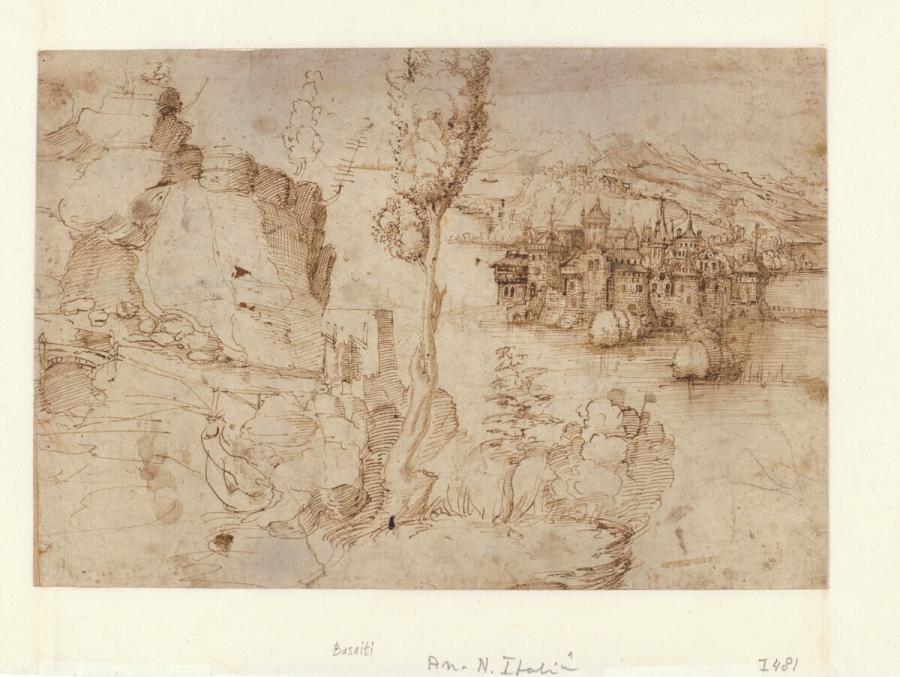Specifications
| Title | Rocky Landscape with Hills and a City on a Lake |
|---|---|
| Material and technique | Pen and brown ink |
| Object type |
Drawing
> Two-dimensional object
> Art object
|
| Location | This object is in storage |
| Dimensions |
Height 205 mm Width 304 mm |
|---|---|
| Artists |
Draughtsman:
Marco Basaiti
|
| Accession number | I 481 (PK) |
| Credits | Loan Stichting Museum Boijmans Van Beuningen (former Koenigs collection), 1940 |
| Department | Drawings & Prints |
| Acquisition date | 1940 |
| Creation date | in circa 1505-1510 |
| Watermark | small unrecognizable fragment, possibly top of French lily (below right, on P1 of 6P, vV). [see image] |
| Inscriptions | '68' or '89' (verso, left top center, pencil) |
| Collector | Collector / Franz Koenigs |
| Mark | F.W. Koenigs (L.1023a) |
| Provenance | Count Lodovico Moscardo (1611-1681), Verona; Teresa Moscardo Miniscalchi, Verona; Miniscalchi collection, Verona; Count Mario Miniscalchi-Erizzo (1881-1957); Luigi Grassi (1858–1937), Florence, acquired from Moscardo’s heirs in 1905; Frits Lugt (1884–1970), Maartensdijk, acquired 20 October 1929; Franz W. Koenigs (1881-1941, L.1023a), Haarlem, acquired in 1930 (North Italian, c. 1500); D.G. van Beuningen (1877-1955), Rotterdam, acquired with the Koenigs Collection in 1940 and donated to Stichting Museum Boijmans Van Beuningen |
| Exhibitions | Amsterdam 1934, no. 460; Venice/Florence 1985, no. 19; Rotterdam/New York 1990, no. 60; Rotterdam 2009 (coll 2 kw 3); Rotterdam (Rondom Fra B.) 2016 |
| Internal exhibitions |
Van Pisanello tot Cézanne (1992) De Collectie Twee - wissel III, Prenten & Tekeningen (2009) Rondom Fra Bartolommeo (2016) |
| Research |
Show research Italian Drawings 1400-1600 |
| Literature | Amsterdam 1934, no. 460 (North Italian, c. 1500); Aikema/Meijer 1985, no. 19, ill. (Basaiti); Byam Shaw 1985, p. 832; Luijten/Meij 1990, no. 60, ill. (attr. Basaiti) |
| Material | |
| Object | |
| Geographical origin | Italy > Southern Europe > Europe |
Do you have corrections or additional information about this work? Please, send us a message























